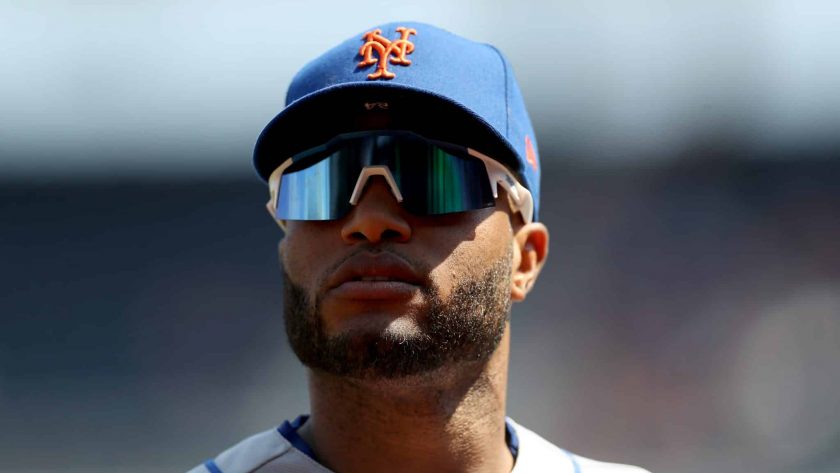New York Mets’ Robinson Cano will struggle to be productive in 2020

After a disappointing first season in Queens, Robinson Cano’s struggles are likely to continue through the 2020 campaign.
Prior to the 2019 season, the New York Mets surprisingly acquired veteran Robinson Cano along with Edwin Diaz from the Mariners in exchange for five players including top prospect Jarred Kelenic.
Despite the high price that general manager Brodie Van Wagenen spent, the former player agent was confident that both Cano and Diaz would succeed in blue pinstripes. Although, neither player lived up to their expectations last season.
The 37-year-old’s offensive production suffered a major decline, which led to the worst performance of his career since the 2008 season.
Over his 423 plate appearances in 2019, the Mets’ second baseman was limited to just 107 games and he produced just 13 home runs, 39 RBI’s, .172 ISO, .280 BABIP, 93 wRC+, a 0.8 fWAR rating along with a slashing line of .256/.307/.428/.736 as well. In addition, the left-handed hitter also generated a measly 5.9% walk rate (lowest rate since 2011) and a career-high 16.3% strikeout rate.
While injuries played a big factor in Cano’s awful first season with the Mets, those are the type of things that are expected to happen when you’re dealing with a mid-30s infielder. Following the torn hamstring that he suffered last season, the Mets have been extra cautious with his workload this spring.
………………………
Despite the additional rest that he’s been provided with and the amount of time that he spent in the weight room this winter, Cano will likely fail to be a productive player at the plate and at second base this season.
During the 2019 season, Cano was a liability at the plate with runners in scoring position. Through his 93 plate appearances, the declining middle infielder hit just one home run, 22 RBI’s, .111 ISO, .225 BABIP, 52 wRC+ and a poor slashing line of .210/.280/.321/.601. Furthermore, the eight-time All-Star created a troubling 27.8% hard-hit rate with RISP, which was the 34th lowest rate among all hitters in the majors with at least 50 plate appearances.
What makes that metric even more concerning is that creating hard contact was the only successful thing that Cano accomplished last season.
In 2019, the five-time Silver Slugger award winner produced a 38.3% hard-hit rate (87th percentile) along with a 90.8 mph average exit velocity (82nd percentile). But, the majority of Cano’s hard contact came with the bases empty as he recorded a 41.1% hard-hit rate.
Based on these results, the Mets just can’t afford to have Cano hitting in the middle of their order in 2020. In fact, he could be destined to hit in the bottom third of their lineup if these struggles with RISP continue to worsen.
……………………..
As for his defense, Cano’s fielding ability drastically declined during the 2019 season. Over his 804.1 innings at second base, the two-time Gold Glove award winner created a -6 DRS (third-worst among all second basemen who played at least 800 innings), -1 OAA (tied for 13th-worst), -0.8 UZR (seventh-worst) and a -1.5 UZR/150 (fifth-worst).
In comparison, Cano generated a +5 DRS (tied for ninth-best among all second basemen with at least 550 innings played), +2 OAA (tied for 15th-best), 2.8 UZR (tied for ninth-best) along with a 9.3 UZR/150 (fifth-best) over his 561.1 innings at second base in 2018.
Along with his overall defensive numbers, Cano’s range at second base also suffered a significant decline in 2019. Last season, the right-handed infielder produced a -1.2 OAA when fielding balls just to the right of second base, which was a huge decrease from his +0.7 OAA in that same spot from the 2018 season.
Based on Cano’s declining results from last season, the Mets should be concerned about his future as the everyday second baseman. Although, until a universal designated hitter is inserted into the majors, the Mets don’t have much of a choice other than to play Cano at second base.
As a result, if Cano’s healthy, then the Mets would likely prefer to have him play somewhere around 120 games at second base this season. Given that he’s entering his age-37 season, it would be extremely surprising to see him take the field in that many games for the Mets.
………………………..
For Van Wagenen and the Mets, they need to be realistic about Cano’s expectations for the 2020 campaign. Since he’s owed $24 million this season, they’ll obviously want him producing out on the field as much as he can.
At this stage of his career, it seems very unlikely for Cano to even earn at least a 2.0 fWAR rating in 2020. Based on his hard-hit rate, there’s at least a chance for the second-highest-paid second baseman in the league to hit at least 15 home runs this season. But with the soaring number of home runs that are hit in today’s era, that home run total for the Mets’ slugger would likely be considered as below league average.
To make matters worse for Van Wagenen, Cano’s production is already starting to fade and he’s still under contract through the 2023 season. With four years and $96 million left on his current deal, the Mets will likely be forced to keep the aging infielder until his immovable contract runs out.
If that occurs, this trade for Cano and Diaz will not only be remembered as one of the worst transactions in Mets’ history, but also one of the worst throughout the major leagues as well.






